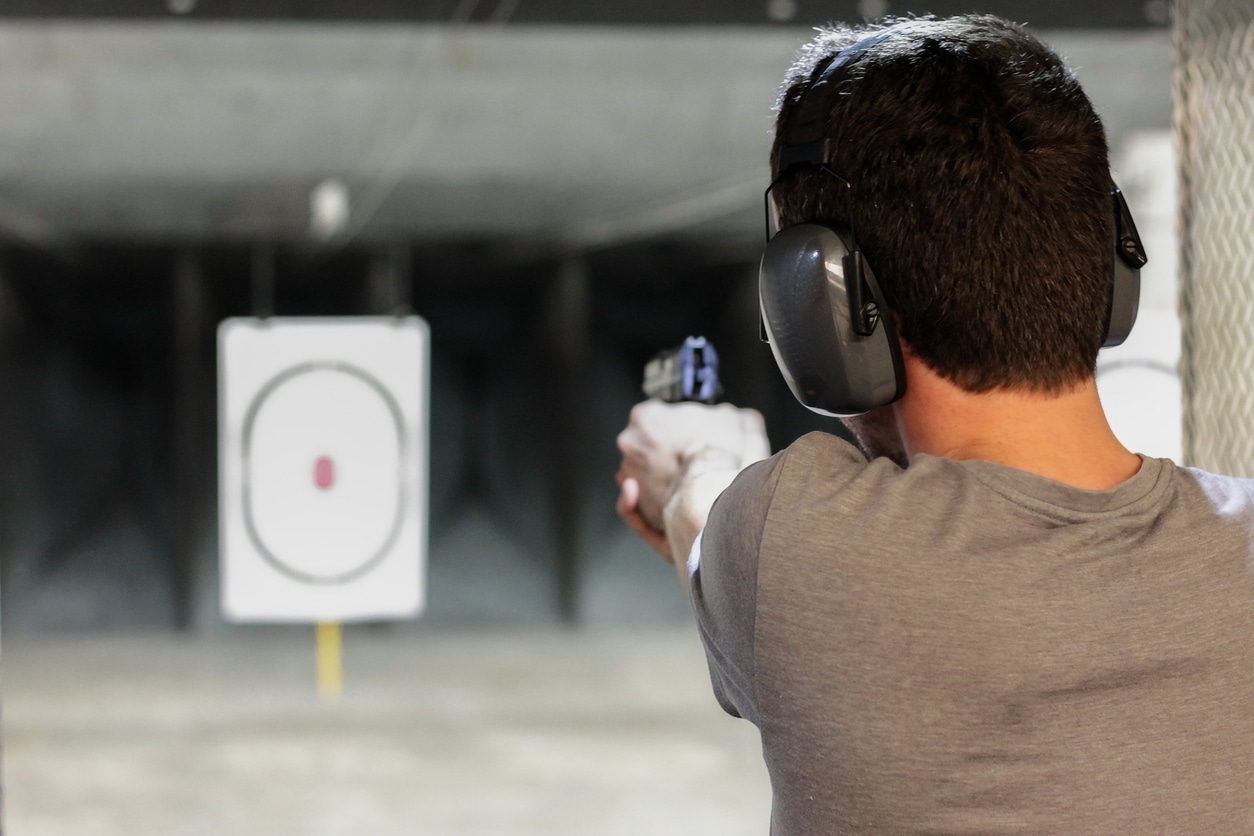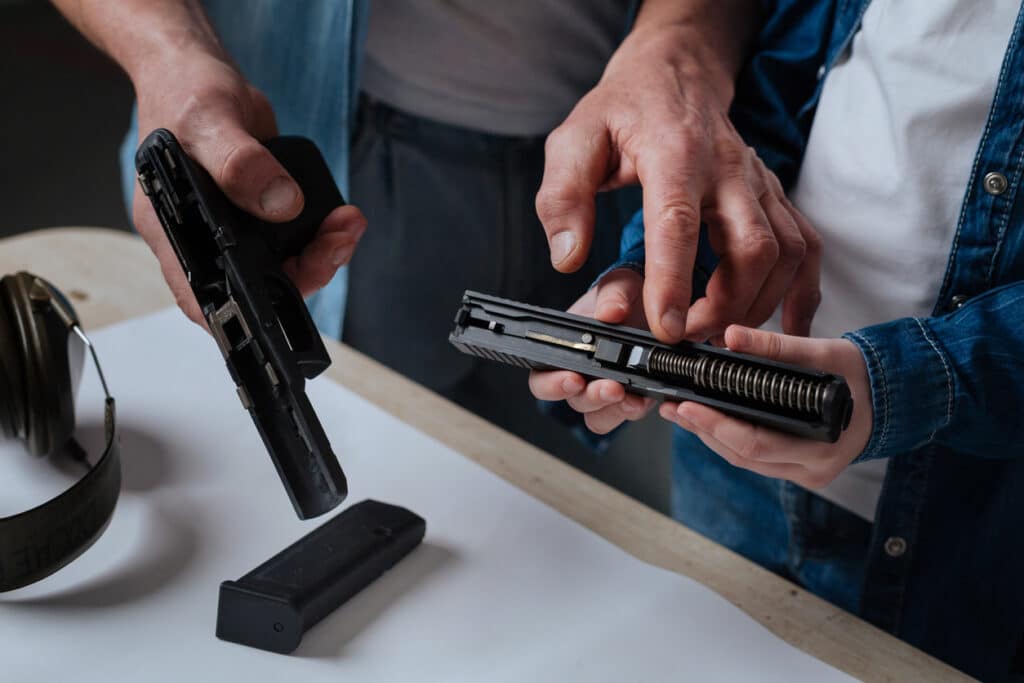Whether you’re interested in recreational shooting, home defense, or competitive shooting sports, proper firearm training forms the foundation of responsible gun ownership. This basic knowledge guide walks you through everything you need to know as a beginner, from firearm safety protocols to safe gun handling techniques and shooting fundamentals.
Starting your journey as a shooter means building a strong foundation of safe practices and essential skills. As a beginner, it’s important to focus on developing accuracy, control, and confidence with every shot. By committing to proper training, you’ll learn how to avoid common mistakes and gain the expertise needed to handle firearms safely and effectively.
Choosing the right firearm is a key step in your learning process, with factors like comfort, recoil, and ease of use influencing your decision. Understanding shooting range etiquette, following safety protocols, and practicing regularly will help you grow as a responsible and skilled shooter. With consistent practice and guidance, you’ll develop the defensive skills needed to use a firearm confidently and safely.
Safety First: The Foundation of Responsible Gun Ownership
Safety forms the bedrock of responsible firearm handling and shooting sports. Every shooter, from beginners to experienced shooters, must follow these universal gun safety rules without exception.
The Four Universal Firearm Safety Rules
- Always treat every firearm as if it’s loaded. When handling any firearm, it’s crucial to first remove the ammunition and verify that the chamber is empty. Even when you believe a firearm is unloaded, always perform a thorough safety check—this habit could save lives. Additionally, never simply take someone else’s word regarding whether a firearm is loaded or not; always verify the status yourself through proper safe gun handling.
- Keep the muzzle pointed in a safe direction. When practicing firearm safety at the shooting range, maintaining strict control over where the firearm is pointed is essential for safety. At the gun range, you must always keep the muzzle pointed downrange to ensure a safe environment for everyone present. One of the most fundamental rules of handgun safety is to never point a weapon at anything you don’t intend to shoot, as this helps prevent accidents and ensures responsible gun ownership.
- Keep your finger off the trigger. One of the most critical aspects of firearm training and shooting proficiency is proper trigger control. When handling a handgun, always keep your trigger finger resting along the frame of the weapon until you’re ready to shoot. This fundamental practice should become second nature through consistent training and mindful repetition. Only when your sights are properly aligned with your intended target should you move your finger onto the trigger, ensuring both safety and accuracy in your shooting fundamentals.
Essential Equipment Basics for Firearm Safety
Before heading to the shooting range, you’ll need specific safety equipment and basic gear for responsible gun ownership. Eye and ear protection are non-negotiable requirements at all gun ranges. Quality safety glasses should wrap around your face and meet ANSI Z87.1+ standards, while ear protection should have a Noise Reduction Rating (NRR) of at least 22 decibels.
Your basic range kit should include:
- Eye protection
- Ear protection (either muffs or plugs)
- Closed-toe shoes
- Target supplies
For first-time shooters, Keystone Shooting Center offers rental handguns and rifles. This allows you to try different firearms before making a purchase. Their rental counter features various handguns, rifles, and shotguns suitable for beginners, along with knowledgeable staff who can guide your selection.
When you’re ready to choose your first firearm, consider starting with a .22 caliber handgun or rifle. These firearms typically have minimal recoil and use less expensive ammunition, making them perfect for developing shooting fundamentals. Keystone’s range officers can help match you with an appropriate firearm based on your physical size, comfort level, and intended use.
Understanding Basic Shooting Fundamentals for Beginners
Learning proper firearm handling and shooting fundamentals builds the foundation for safe and accurate shooting skills. The basic elements of marksmanship work together like pieces of a puzzle – when one element is off, it affects your entire shot.
Proper Stance and Grip
Your shooting stance provides stability and control. Stand with feet shoulder-width apart, knees slightly bent, and body weight forward. For handgun shooting, use the isosceles stance – facing the target squarely with arms extended. Wrap your dominant hand high on the grip, with your support hand filling the empty space. Both thumbs should point forward, applying firm but not crushing pressure.
Sight Alignment and Sight Picture
Focus on your front sight, not the target. Align your front sight centered between the rear sights at equal height. This proper sight alignment, combined with placing the sights on your intended target point, creates your sight picture. Remember – a clear front sight with a slightly blurry target is correct.
Breathing and Stability
Breathe naturally while shooting. Take a normal breath, exhale halfway, and pause – this is your natural respiratory pause. Take your shot during this 2-3 second window when your body is most stable. Don’t hold your breath for too long, as this creates unwanted movement.
Trigger Control
Press the trigger straight back using the pad of your index finger. Apply steady, increasing pressure without disturbing your sight picture. Many novice shooters jerk or slap the trigger, pushing shots off target. Think of it as steadily squeezing a lemon – smooth and consistent.
Follow-Through
Maintain your sight picture and grip through the shot and after the firearm fires. This follow-through prevents moving the gun during the split second when the bullet is traveling down the barrel. Reset the trigger only when you’re ready for your next shot.
Common Beginner Mistakes
First-time shooters often anticipate recoil by pushing forward against the handgun, resulting in low shots. Others peek over their sights to see where they hit. Focus on your front sight and trust your fundamentals. Remember that accuracy comes from consistency in applying these basic principles.
Mastering these shooting fundamentals takes practice. Start with dry-fire drills at home (with an unloaded firearm) to build muscle memory. During live-fire practice, work on one element at a time. Focus on proper form rather than speed – accuracy comes first, then speed follows naturally.
Taking Your Next Steps
Your journey in firearm training follows a clear path forward at Keystone Shooting Center. Start with basic knowledge and firearm safety classes to build proper technique and safe gun handling habits. As you progress from beginner to experienced shooter, move into intermediate instruction where you’ll refine your shooting skills through focused drills and exercises. Advanced training courses await when you’re ready to master specialized defensive skills and tactical applications.
Range Memberships
Membership at Keystone unlocks significant benefits for dedicated learners. The Blue Membership provides 15% off training classes and private instruction, plus 35% off gun rentals. VIP Premium members enjoy unlimited shooting range time, free gun rentals, and access to the private luxury lounge. For law enforcement and military, the Freedom Membership offers special rates on all services.
Private Training
One-on-one instruction gives you personalized attention to rapidly improve your skill level. Your certified instructor adapts the training to your exact needs and learning style. Group training classes offer a structured curriculum and peer learning opportunities. Specialized courses cover topics like defensive shooting and youth rifle handling instruction.
Practice makes perfect with Keystone’s skill development resources. The state-of-the-art target retriever system features 27 live-fire training scenarios and games. The Ti shooting simulator provides additional practice opportunities. Regular gun range time helps ingrain proper shooting fundamentals through repetition.
When planning your training, consistency matters more than marathon sessions. Start with weekly live-fire practice to build fundamentals. Set achievable short-term goals like grip improvement or trigger control. As you progress to the next level, increase frequency and add specialized training to reach long-term objectives.
Ready to start? The process is simple. Visit Keystone Shooting Center to start your beginner training. Contact us today to learn more about our range, classes, and private lessons.


 Search
Search 


